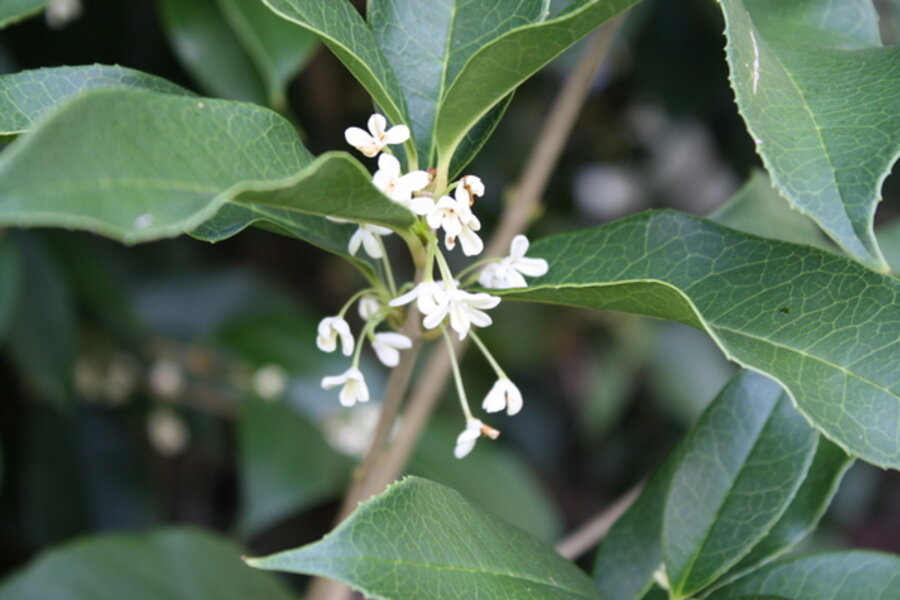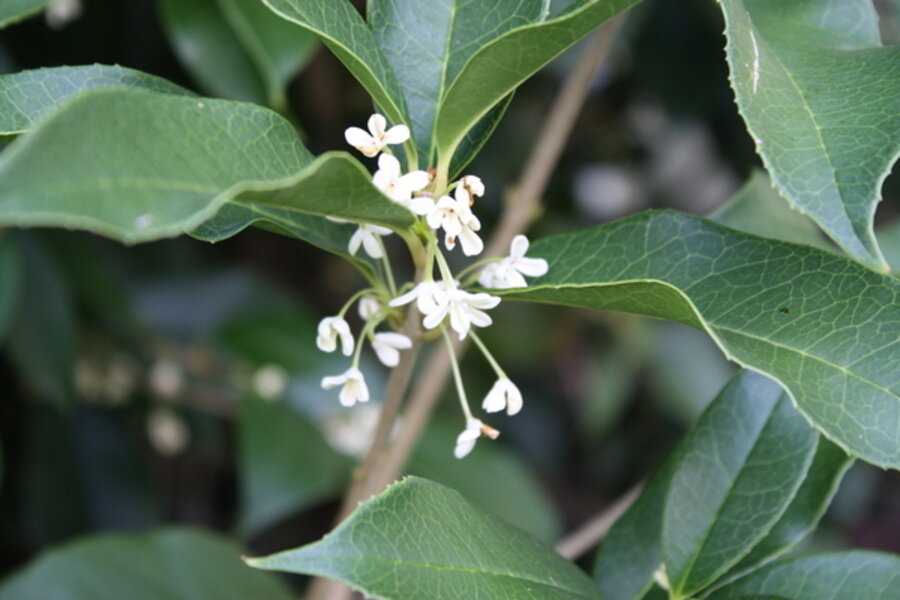The unmatched fragrance of tea olive
Loading...
When I moved into my new home over the summer, I didn't pay much attention to the broadleaf evergreen shrubs on either side of the back steps. I noticed that they obviously were too large for the spots they occupied and therefore were going to require plenty of ongoing pruning. And they were somewhat leggy.
I briefly wondered about replacing them. But since I knew that I would be tackling new landscape plans over the winter, these were fleeting thoughts.
A light fragrance that's potent
Well, I can tell you now that there's no chance these shrubs are going to replaced (unless it's with a cultivar that's smaller). These are the most fragrant shrubs I've ever owned -- and the smell is simply delightful. And I'm very picky about plant odors; many are much too sweet and intense for me.
This fragrance is light, citrusy, and carries for quite a distance. When you pull up to the back of our property and step out of the car, it's the first thing you smell. Wow!
Thanks to Ron Hatchell, who was here helping with some landscape work, I learned that the shrubs with the delightful fragrance are tea olives (Osmanthus fragrans).
By following my nose, I discovered that we own three tea olives. (The third is on the opposite side of the screened porch from the other two -- it's fun to sit on the porch and be surrounded by tea olive fragrance.)
I had noticed that the tiny white flowers didn't attract bees, which surprised me -- and Ron said that was generally true. But, he added, the plant reblooms in the spring, and then the bees do show up.
A shrub that isn't fussy
Right away, I checked my garden books to learn more about tea olive. Online, I discovered that Clemson University in my new home state had a write-up that included everything I needed to know: at home mostly in USDA Zones 8 to 10; can be planted in full sun or partial shade; not picky about soil; doesn't have pest problems.
Then, this morning, when I opened my newspaper, I saw that Amanda McNulty had written about the shrub with the "beautiful smell."
Sadly, our tea olives' blossoms are beginning to fade after providing a couple of weeks of pleasure. (The University of Florida says they persist longer there.) But I can't wait till next spring, when the flowers and the fragrance return.
Or maybe I'll add O. x fortunei to the yard, since it blooms a couple of weeks later than O. fragrans and is smaller. Or what about planting a fringe tree Chionanthus virginicus, since the two related plants have a somewhat similar fragrance?
You can see I'll have plenty to plan over the winter!
-----
Judy Lowe is the editor of the Diggin' It blog and the author of 10 garden books. Her latest, about herb theme gardens, will be published in January 2011.






